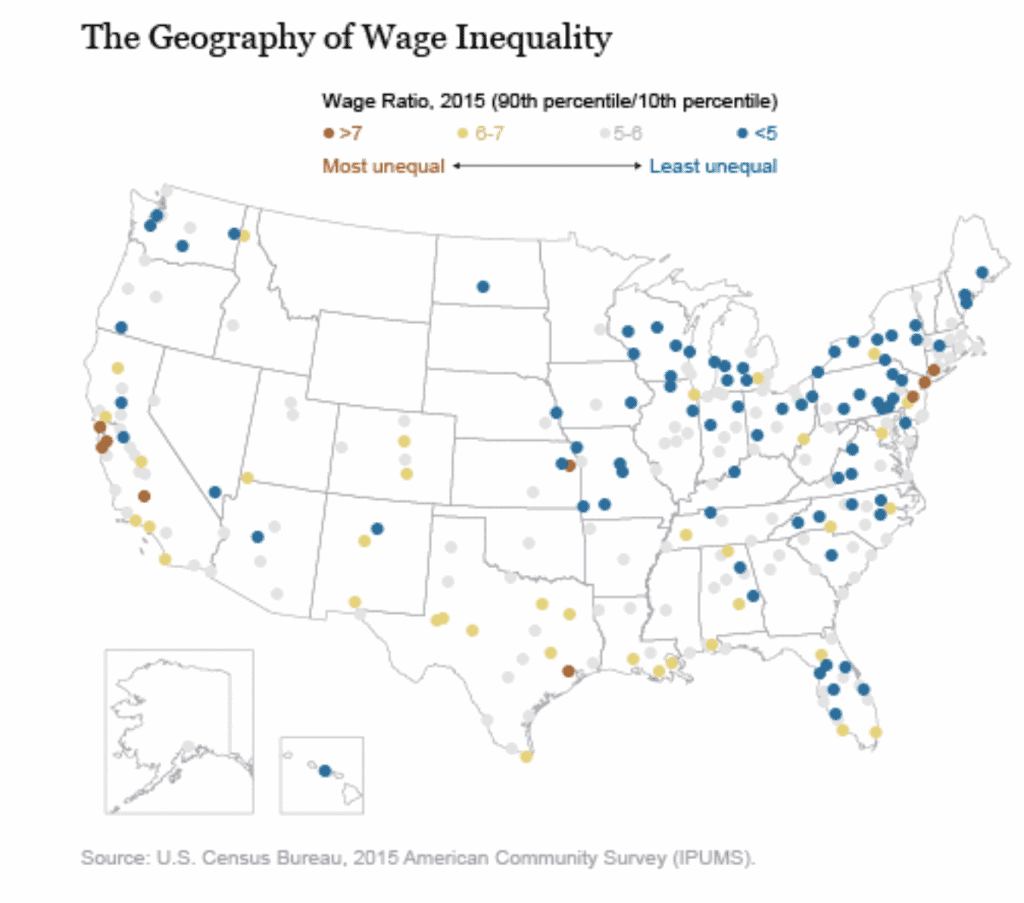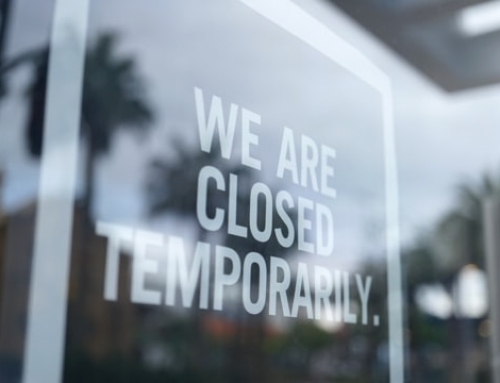With this post we launch a multi-part series focusing on heterogeneity, or differences in population, and its financial effects.
Today, we take on the issue of wage inequality, which is much more pronounced in some parts of the country than others.
The most unequal places tend to be large urban areas with healthy economies where wage growth has been particularly strong for those at the top of the wage distribution. The least unequal places tend to have relatively sluggish economies that deliver slower wage growth for high, middle, and lower wage earners alike.
We focus on the ratio of the wages earned by a worker at the 90th percentile of the wage distribution to the wages earned by a worker at the 10th percentile, often referred to as the 90/10 ratio, which we show in the map below. The metropolitan areas in copper and yellow—with 90/10 ratios above 6—are the most unequal places in the country, while the metropolitan areas in blue—with 90/10 ratios below 5—are the least unequal places.

Many large urban areas, including New York City, Washington, D.C., Chicago, Houston, Los Angeles, and the San Francisco Bay area, are among the most unequal places. Inequality is also relatively high in parts of the South, such as metro areas in Texas, Louisiana, and Alabama.
By contrast, wage inequality is lowest in metropolitan areas in the Midwest and the Great Lakes region, often referred to as the “Rust Belt,” as well as in Washington State and some parts of Florida.
These regional differences in wage inequality reflect the local effects of technological change and globalization on workers. These effects conform to one of two general patterns. In one set of places, technological change and globalization have led to a vibrant economy and strong demand for skilled labor. For example, San Francisco has seen a burgeoning tech sector in recent decades, where wages for skilled workers toward the top of the wage distribution have increased significantly relative to those at the middle and bottom. The result is a high level of wage inequality.
In other places, technological change and globalization have led to weak economic conditions and lackluster wage growth across the board as these powerful economic forces have displaced many middle- and lower-skilled workers. This dynamic has played out in Detroit, for example, where the auto industry has eliminated thousands of jobs—cuts brought about both by automation and by auto plant closures, some of which have been tied to increased global competition.
While technological change and globalization have been the key drivers of these geographic patterns, there are two other important factors contributing to and reinforcing regional differences in wage inequality.
Agglomeration economies—or the benefits that arise when people and firms locate in large numbers near one another in cities—have enhanced the productivity and wages of skilled workers in large, dense metropolitan areas.
Agglomeration raises the productivity of all workers but favors higher-skilled ones. As a result, highly-skilled workers in places where skill is concentrated tend to command even higher wages than they would earn elsewhere.
Second, migration within the United States has changed the mix of workers across places. Since the early 1980s, skilled workers have become much more geographically concentrated as those with college and graduate degrees have flocked to large cities while lesser-skilled workers have increasingly been priced out of such places because of rising housing costs. This pattern of internal migration has reinforced the productivity benefits of agglomeration economies in many places.
As a result these economic forces, some places now show a much higher degree of income inequality than others. One would assume that as the economy demands more workers with greater tech skills, these inequality gaps will only widen.
Error: Contact form not found.





